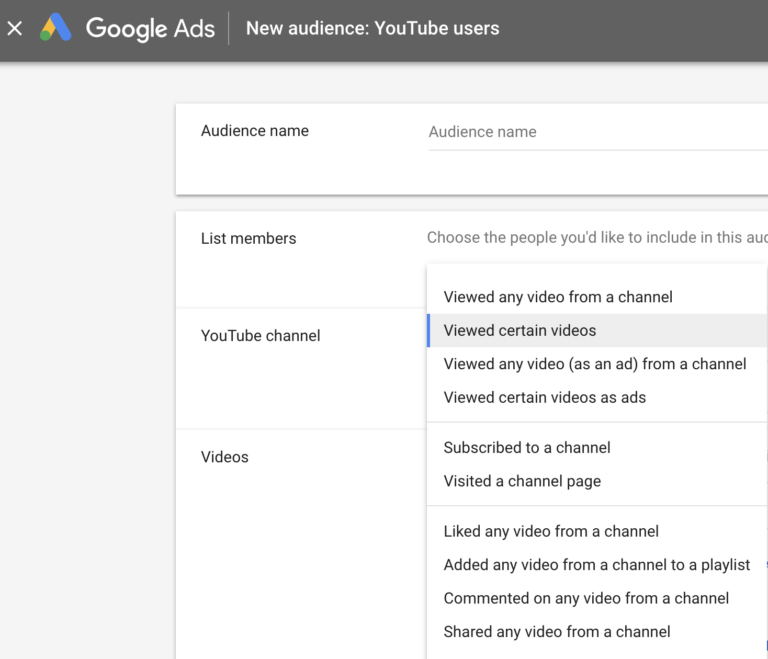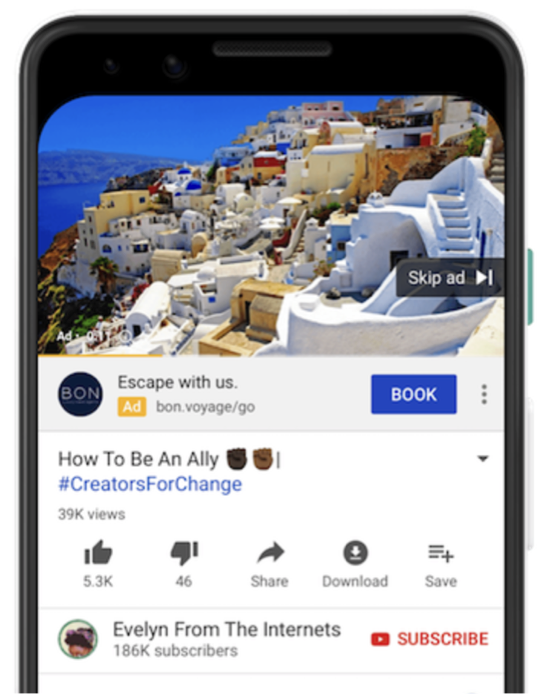When businesses are new to video advertising, they often have a lot of questions.
And one of the most common questions they ask is how they can achieve their goals.
How can they use video advertising to build brand awareness? Reach a certain demographic? Target customers of their main competitors?
Or maybe they just want to know how to get started.
As you might expect, the answers to these questions will vary.
This article will focus on five different goals you might have for your video advertising – and how you can achieve them.
Goal 1: Dip Your Toe in the Water
For many businesses who haven’t tried video advertising before, their primary goal is to simply give video advertising a try, without diving in too deeply.
They want to get comfortable with it. Then, after they’ve run a campaign or two, they can decide whether to ramp things up a notch or take a step back.
In this kind of scenario, I often recommend remarketing as an approach.
I think it’s the safest bet as a first foray into video advertising. When done well, you’re likely to see good results without having to put up a huge budget.
Remarketing in video advertising is basically the same as remarketing in the GDN. You’re targeting people who’ve already interacted with your company.
Maybe they’ve visited your website, used your mobile app, watched your videos or shared their contact information with you.
You can even get more specific than that! For example, you can choose to remarket only to people who’ve viewed a certain category section or page of your website.
You can even remarket to visitors who have viewed any video from your channel, or only certain videos, as you can see in the screenshot below:

And if you have sufficient volume, you can also lean on your Google analytics to further target behaviors that lead to conversions.
This type of approach is pretty safe because you’re only targeting people who already have some kind of “relationship” with your brand – in contrast to other approaches where you might target people who don’t know your brand at all.
Goal 2: Build Brand Awareness
But maybe you’re ready to do more than just dip your toes into the video advertising water.
You’re ready to go bigger — and you want to build brand awareness more broadly.
In that case, you can define the groups you want to target with detailed demographics or affinity audiences.
If you’ve used these targeting options in the GDN, you’re probably already familiar with them. They work much the same way here.
Detailed Demographics
With detailed demographics, you reach to broad segments of the population that share common traits. Some examples are “college students,” “homeowners,” and “new parents.”
So, for example, if you’re selling homeowners insurance, you might want to target homeowners.
If you’re selling reusable diapers, you might want to target new parents.
As you can see, these categories are very broad.
You can also combine categories and geographic areas to narrow them further. So instead of “college students,” you might want to target “college students” combined with “Boston.”
Affinity Audiences
You can use affinity audiences in a similar way.
Affinity audiences are basically pre-defined categories that Google has put together for you.
The list is long, but includes (for example) broader categories such as “banking & finance,” “beauty & wellness,” “food & dining,” “home & garden,” “lifestyles & hobbies,” etc.
Many of these broader categories are further broken down into narrower categories, so the category “lifestyles & hobbies” is also available as:
- Lifestyles & Hobbies/Art & Theater Aficionados
- Lifestyles & Hobbies/Business Professionals
- Lifestyles & Hobbies/Family-Focused
- Lifestyles & Hobbies/Fashionistas
- Lifestyles & Hobbies/Frequently Attends Live Events
- Etc.
Whether you choose to use detailed demographics or affinities, budgets for this kind of targeting need to be reasonably robust because the targeting tends to be fairly broad.
You may also find that this kind of targeting is a better fit for business to consumer marketing (B2C) than business to business (B2B). But you may still find some categories that will work for your B2B products and services.
Goal 3: Reach People Who’re Looking to Buy
If your goal is to reach people who are ready to buy the product or service you offer (based on their online behavior), then in-market audience targeting is a great way to go.
With in-marketing targeting, your ads are presented to people who’re actively researching or comparing products and services across the GDN, partner sites, and YouTube.
Google also takes into account clicks on related ads and subsequent conversions. They also look at the content of the sites and pages these people visit, the frequency of those visits and how recently they occurred.
Again, the audiences for in-market targeting are predefined. They include categories such as:
- Apparel and Accessories
- Autos & Vehicles
- Baby & Children’s Products
- Beauty Products & Services
- Business Services
- Computers & Peripherals
- Consumer Electronics
- Etc.
Again, many of these categories will be better suited to B2C than B2B, but not all of them.
A B2B business might, for example, be able to use categories such as business services, financial services, payroll, office supplies, and SEO.
We tend to use this type of targeting a lot. After all, why wouldn’t you want to reach the people who’ve already expressed an interest the type of product or service you offer?
We also like this strategy because you don’t necessarily need a massive budget to do it.
Goal 4: Tempt Your Competitors’ Customers
If you have a competitor that dominates the market (and you wouldn’t mind catching the attention of its customers), then custom affinities is a good avenue to consider.
Custom affinities allow you to tailor your affinity audience to your brand. And one way you can do it is to include the URLs of your competitors.
For example, say someone is interested in buying mountaineering equipment. She checks out the website of company ABC because it’s the best-known provider of mountaineering equipment.
Your company also sells mountaineering equipment. Or maybe you sell related products or services, such as guided mountaineering tours or how-to classes.
With custom affinities, you can serve your video ads to these same people because they’ve visited the website of your competitor.
This is a method that we’ve used successfully on the GDN — and it can work equally well on for video ads.
It’s a nice way to target relevant groups without having to try and define your audience.
Goal 5: Track Performance More Precisely
Some clients have the goal of tracking ad performance more precisely.
For many years, you couldn’t get a lot of performance detail for your video ads. You could see how many people watched your video (or the first 30 seconds of your video), but that was about it.
You couldn’t see what people did after that. Did they leave and never interact with your brand again? Or did they continue to engage with you?
This changed recently with the addition of TrueView for action campaigns.
These campaigns allow you to place a call to action (and headline) overtop of your video:

With this video campaign subtype, you can encourage customers to visit your landing page, share their contact information, etc.
And thanks to the call to action, you can track their engagement beyond “they watched my video.”
TrueView for action campaigns are available for video campaigns on YouTube.
We use this option a lot for clients because we love the data it gives us. In fact, we wish that it had been introduced years ago!
What Are Your Video Ad Goals?
Of course, you could come up with an almost endless list of goals for your video ad campaigns.
But no matter what your goals, it’s important to define those goals first — before you embark on a video advertising program.
Because if you just jump into all the tools and options that are available to you, you’ll quickly lose sight of what you were trying to do in the first place.
More Resources:
- Upper Funnel Advertising: How to Use Display & Video Ads to Boost Awareness
- How Digital Video Advertising Will Dominate the Next Decade
- PPC 101: A Complete Guide to PPC Marketing Basics
Image Credits
Featured Image: Dreamstime.com
Screenshot taken by author, March 2019
TrueView for Action Image: Google Support





